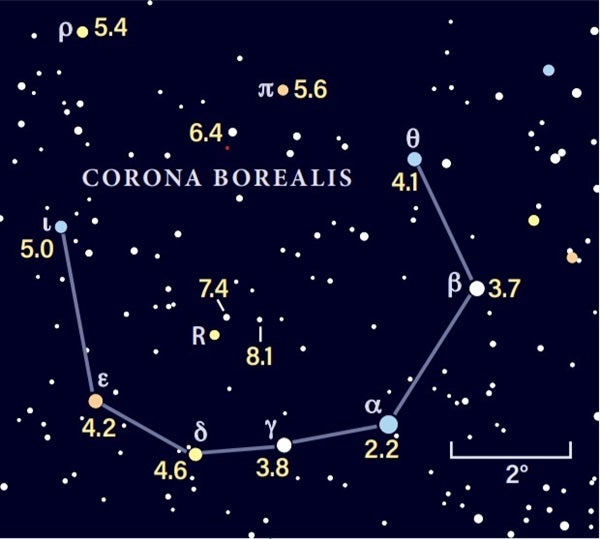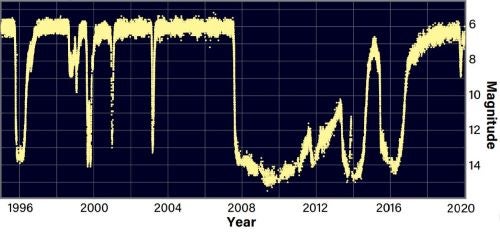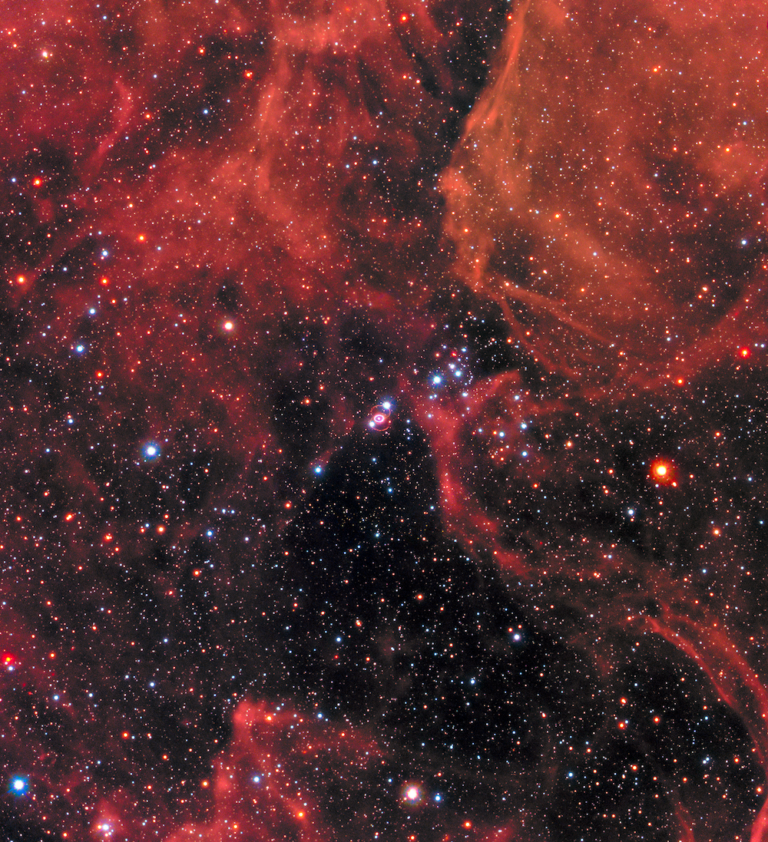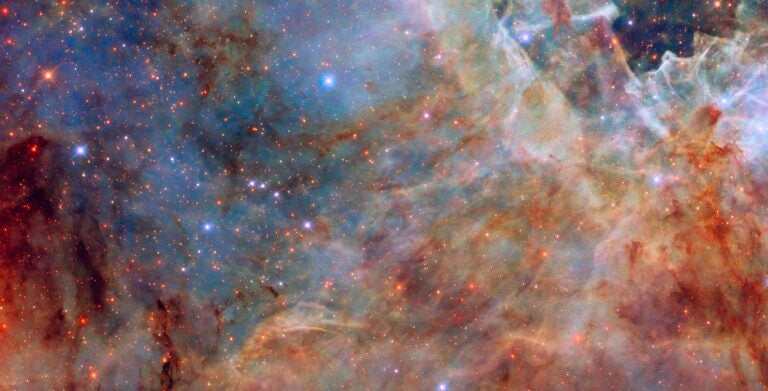One of my favorite backyard astronomy activities is observing variable stars. In the past, I’ve featured a handful of my favorites, including R Leonis (April 2004), Delta (δ) Cephei and Beta (β) Lyrae (September 2004), R Scuti (August 2005), Beta (β) Persei (Algol; November 2006), SS Cygni (September 2008), Mu (μ) and S Cephei (October 2008), and Epsilon (ε) Aurigae (August 2009).
But as interesting as these variable stars are, none fascinates me more than R Coronae Borealis, usually referred to as “R Cor Bor.” I prefer to call it “R CurveBall,” though, because this unpredictable star has thrown me plenty of curves over the years. R Cor Bor is usually visible as a 6th-magnitude star, and it’s located about one-third of the way from Epsilon to Theta (θ) Coronae Borealis. It might shine this way for several years and then, without warning, fade rapidly from view. I’ve seen R Cor Bor drop a few magnitudes and then return to normal within the span of just months. I’ve also watched it plunge all the way down to 14th magnitude and remain there with occasional fluctuations for years at a time. The light curve on this page shows its erratic behavior over the past quarter of a century.
R Cor Bor is the prototype of a relatively rare group of variable stars that includes some 100 known members, with a few dozen more awaiting official confirmation. Its variability was first reported by the English astronomer Edward Pigott near the end of the 18th century. Among the facts we’ve learned about R Cor Bor in the two-plus centuries since its discovery is that it’s a yellow supergiant, having just 80 to 90 percent the mass of the Sun but 100 times the diameter. Because it’s an aging star that has used up most of its hydrogen fuel, R Cor Bor is comprised of 90 percent helium and just 1 percent hydrogen. The rest is mostly carbon and nitrogen. By contrast, our middle-aged Sun has a composition of approximately 75 percent hydrogen and 25 percent helium by mass. Past distance calculations for R Cor Bor have been iffy at best, but recent data from the Gaia spacecraft suggest that the star is about 4,300 light-years away. From that distance, our Sun would shine feebly at around 15th magnitude!
A pair of unknowns that have astronomers scratching their heads are how stars like R Cor Bor form and what causes their abrupt fadeaways. Two current and wildly different theories of the star’s creation suggest it’s experiencing the final helium flash of an aging star or the merger of a binary white dwarf system. It’s generally believed that the dimming is caused by the release of a cloud of carbon-rich dust that envelops the star’s photosphere. When outward radiation pressure pushes the cloud away, or it simply dissipates on its own, R Cor Bor returns to normal. The mechanism that produces these sooty clouds is still up for study and debate. Because its behavior is virtually opposite that of a classical nova, which undergoes a rapid increase in brightness and then fades back to normalcy, R Cor Bor is sometimes referred to as a “reverse nova.”
How bright (or dim) will R Cor Bor be tonight? I have no idea. As I write this in early February, it’s been hovering around magnitude 6.7 since a brief dip to 9th magnitude last autumn. Has it returned to normal or begun another plunge? The only way to find out is to go outside and see for yourself. If R Cor Bor is near or at maximum brightness, you should be able to pick it up with standard binoculars — even your unaided eye, if you’re viewing from a dark-sky location. When near maximum, its brightness is somewhere between that of the stars marked as magnitudes 5.6 and 6.4 on the accompanying chart. When it’s in the act of fading or returning to max, it might appear more like its magnitudes 7.4 and 8.1 neighbors. If R Cor Bor isn’t visible with binoculars, it’s gone into its disappearing act. Time to get out the telescopes!
Questions, comments, or suggestions? Email me at gchaple@hotmail.com. Next month: Observing in the good old summertime. Clear skies!











